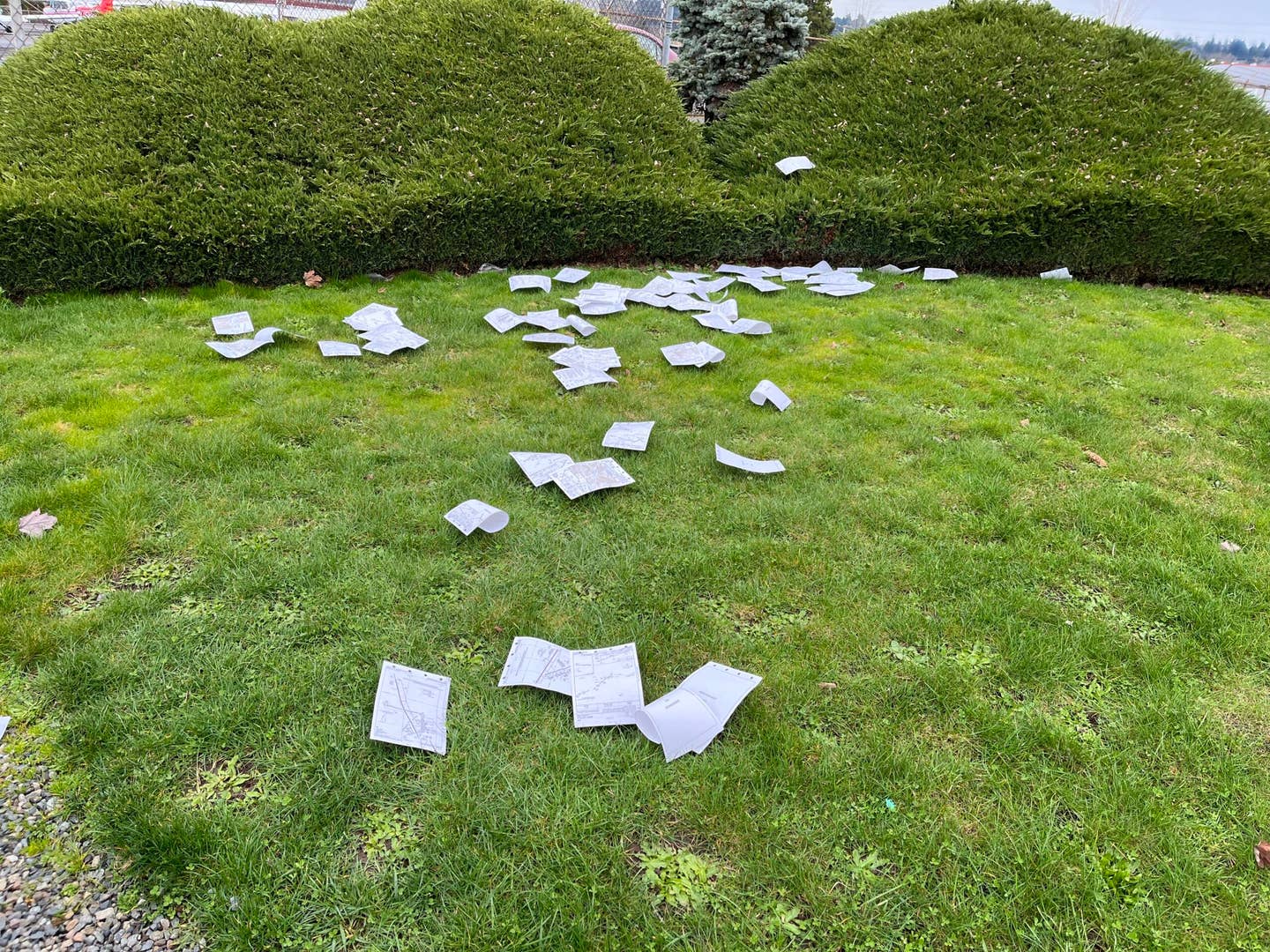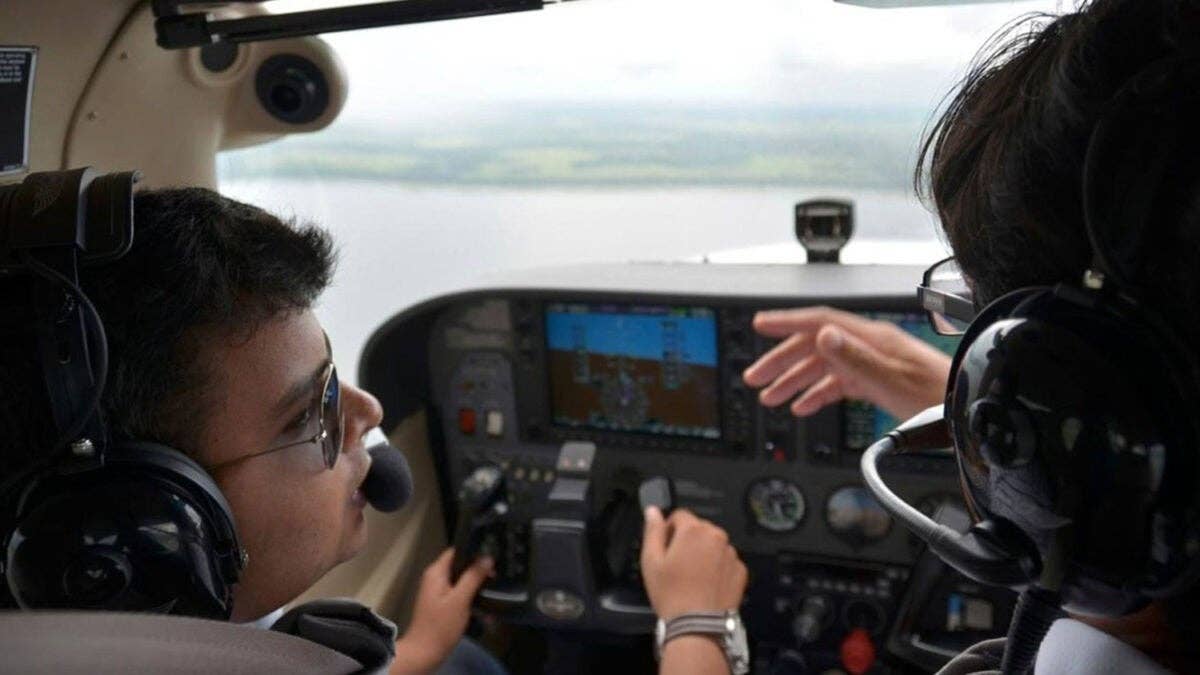Paper Chase: Beware of Prop Wash
It’s important to always watch your tail for that unexpected airplane engine airflow.

Prop wash can cause all kinds of chaos if not mindfully managed. [Meg Godlewski]
One of the first lessons you learn in a fixed-wing aircraft is to watch your prop wash. When the engine is operating, that airflow off the prop heads back toward the tail and will blast anything behind you. And you may be surprised at how far back it reaches.
On Sunday, I found myself in the viewing area outside the fence to the ramp at a local nontowered airport. There is a picnic bench there and some signage to explain the airport to the muggles (the aviation challenged). A fence with a gate code keeps the uninitiated out of the aircraft movement area.
I was on the outside of the fence as I had finished with my learner that day and decided to take this opportunity to update my approach plate binder. I use both Foreflight on an iPad as well as the paper NOS publications for teaching as no one ever stole my NOS paper binder, and they never run out of battery life. In addition the paper they are printed on is absorbent, so if you get a nosebleed in the aircraft or that cup of coffee does an uncommanded gravity check, you have options. I prefer the loose-leaf pubs because I dislike having the big bound binder on my lap. But I have learned the plastic approach binders are just as awkward, so I divided the book in half, A-G and H-Z.
The downside of the paper approach plates is they have to be physically replaced when they expire and that can be time consuming. It can be a challenge to install the new plates, so I do it a section at a time. On this day I was sitting at the picnic table and had just buttoned up the approach binders with the current plates when I heard a Cessna 172 approaching.
"I think I am about to be prop washed," I thought, and I was right because the aircraft entered a turn, so its tail was pointed at the fence line, and those approach plates I had so carefully stacked on the table exploded. I was surrounded by a tornado of paper, most going over my shoulder like something out of a movie. I will admit I was a little amused, as well as annoyed. I threw myself on the approach plates like I was covering a grenade but couldn’t stop them all from escaping.
When the aircraft shut down, I looked behind me—the binder had barfed. There was paper all over the lawn, in the bushes, in the parking lot, etc.
Prop wash is never a good thing. Often it happens when the pilot experiences a loss of situational awareness, or the situation changes mid-process. Most airplanes don't have rearview mirrors, so it's a challenge to check your six. You didn’t see that person coming up behind you, or they might be a muggle and not be aware the activation of the rotating beacon is done just before engine start.
Blasting someone with prop wash can be construed as careless and reckless behavior in an aircraft, but I hope most of the time, if and when it happens, it is an accident. Apologize, clean up any mess made, and learn from the experience.
- READ MORE: Respect the Prop
Sadly, there are some pilots who will prop wash on purpose. An acquaintance of mine who flies floatplanes told me a story of how one pilot's decision to intentionally prop wash the beach on a lake resulted in the seaplane community losing its beach location for its annual summer barbecue.
The event was held on a lake in Idaho. Most of the aircraft were a variety of Super Cubs and Cessnas on floats. The pilots were the type that flew floats for fun and told stories of landing on lakes where the fish normally die of old age. The pilots had been warned to stay away from the swimming area, which was cordoned off with rope and floats. There was ample signage warning boaters and seaplanes about the swimming area and a no-wake zone.
The party was going well until a multiengine seaplane showed up. Wake was generated. The pilot got close enough to the swimming area that the prop wash knocked down some children when he revved the engines to turn the aircraft for parking. The multiengine pilot was greeted by other pilots who were not happy with his arrival technique. Words were exchanged, and the multiengine seaplane pilot decided to leave, revving the engines again all the way to the middle of the lake. There was lots of wake generated and lots of prop wash. I am guessing the Flight Standards District Office received many complaints about that pilot.
Intentionally prop washing someone is throwing the aviation finger. It's a jerk move and most of us were raised better than that.
As for my experience, I spoke with the CFI after the event. The CFI in the airplane knew what happened. We have known each other for years. When she was a freshly minted instructor, she audited the private pilot ground school I taught at to get some teaching pointers. We locked eyes when she got out of the aircraft. She looked horrified and apologized profusely, quickly coming through the gate to help with the cleanup.
Another pilot who was on the ramp and witnessed the event came running to help pick up the mess. As we picked up 300-plus pieces of paper, the CFI said she tried to mitigate the prop wash as the aircraft was coasting with the power at idle and pulling into the transient parking area. When she finished with her learner, we talked about the event a bit more. And a few minutes later, I heard her telling a client about what had happened. It pleases me that learning took place.

Sign-up for newsletters & special offers!
Get the latest FLYING stories & special offers delivered directly to your inbox






